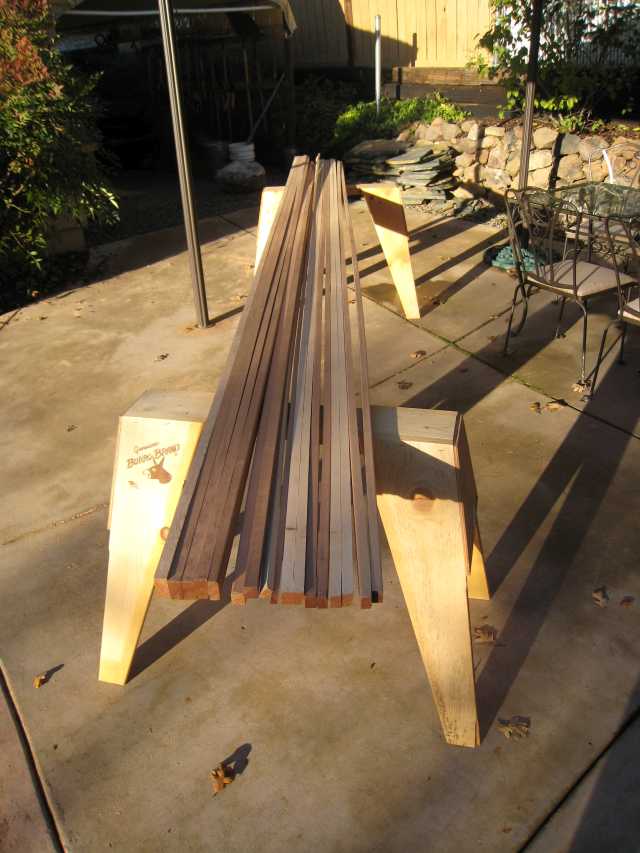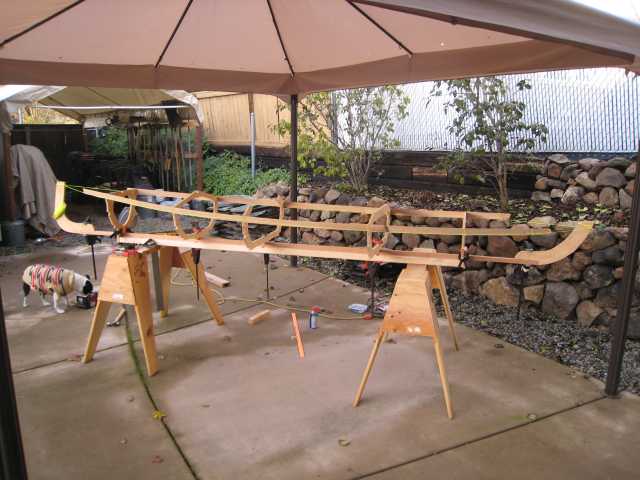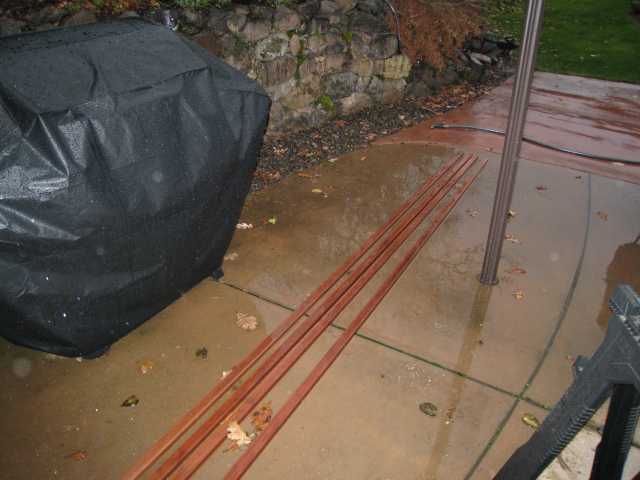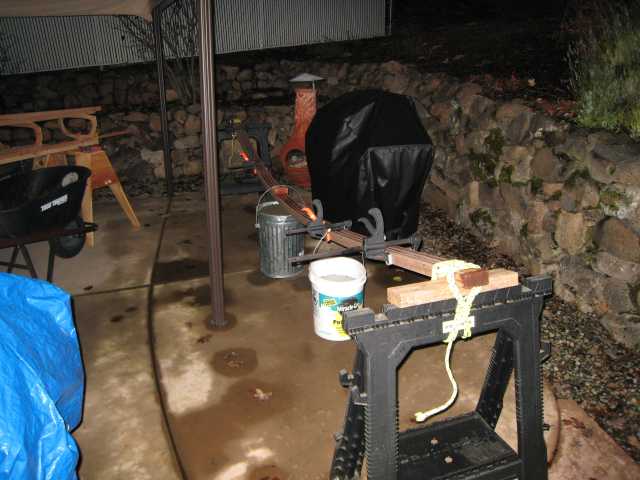Wood framing of the kayak
Created June 4, 2014
Updated with completion of first set of frames June 8, 2014
Updated with cutting of stringers November 15, 2014
Updated with keel and frames November 23, 2014
Updated with gunwale bending November 29, 2014
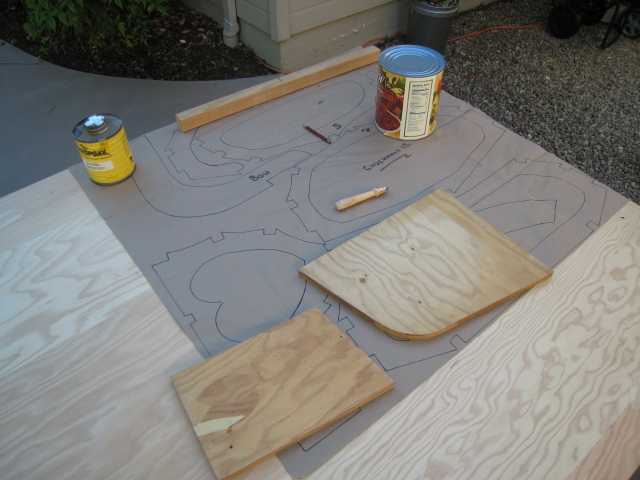
This is where it starts. I've started laying out the frames, stem, and stern on 1/2" marine plywood. My technique was to use a sewing pattern tracer, which is sort of like a miniature pizza cutter with a spiked wheel. Tracing over the lines of the pattern leaves a string of small holes in the wood underneath, which are then connected with a pencil line for cutting. The cutting of the plywood pieces is done with jigsaw, bandsaw, and whatever else is needed to cut out the corners and curves. A really patient person could possibly do it all with a coping saw, but that would take quite a long time! The perfect way to while away the days if you were Robinson Crusoe on a desert island (and had plenty of spare blades for your saw).

